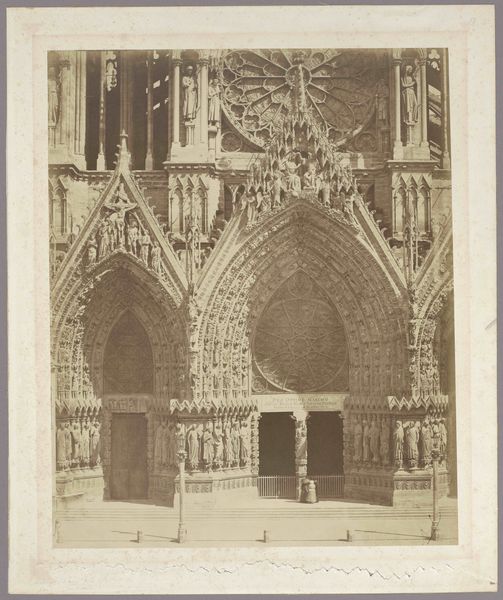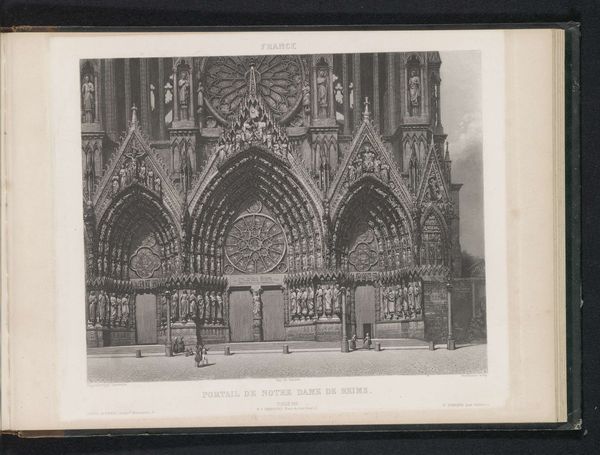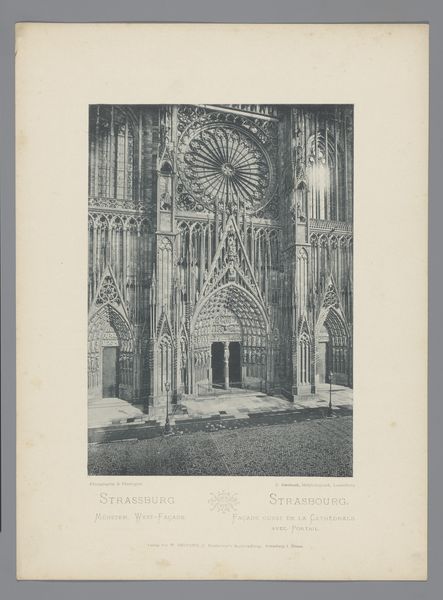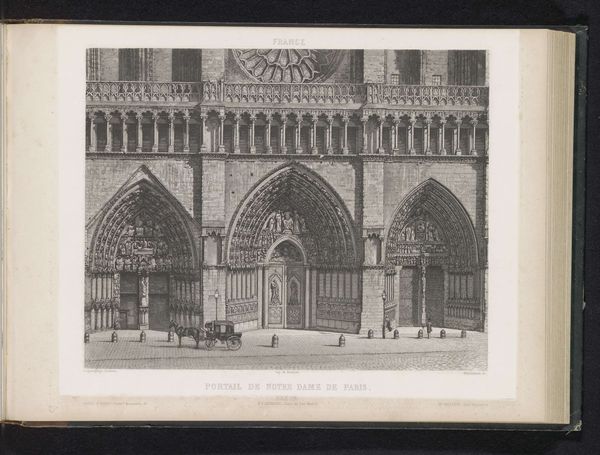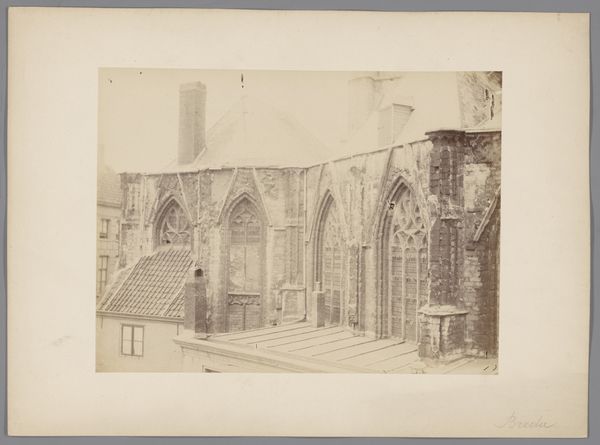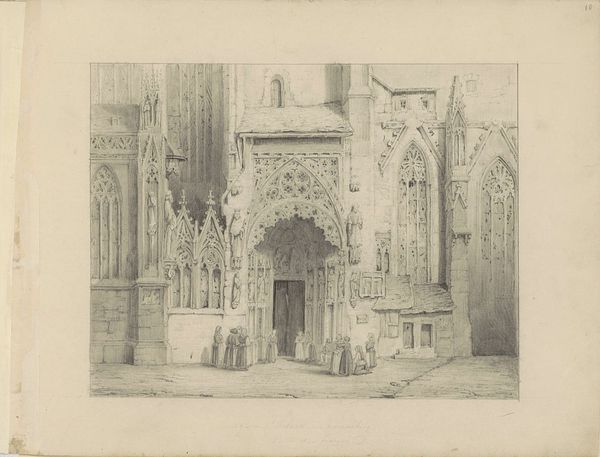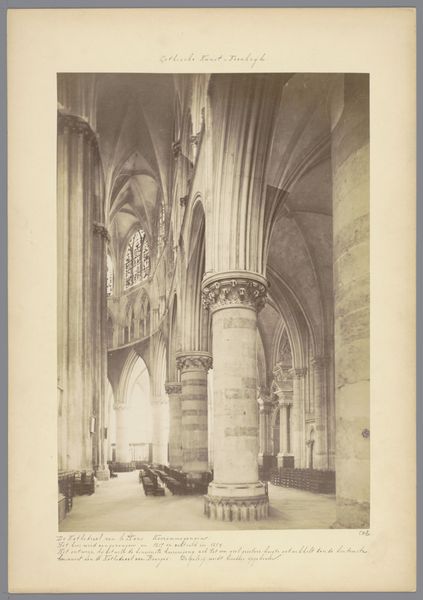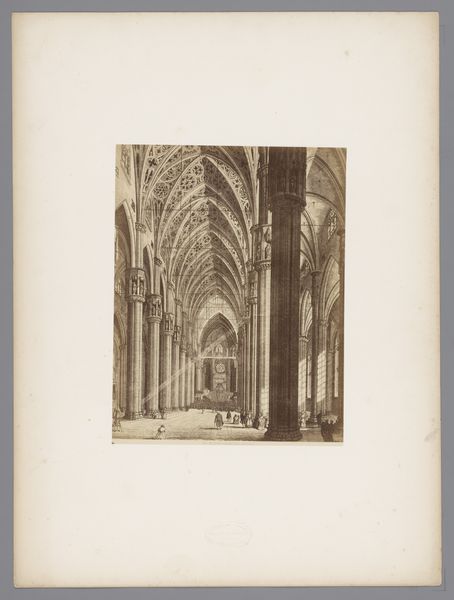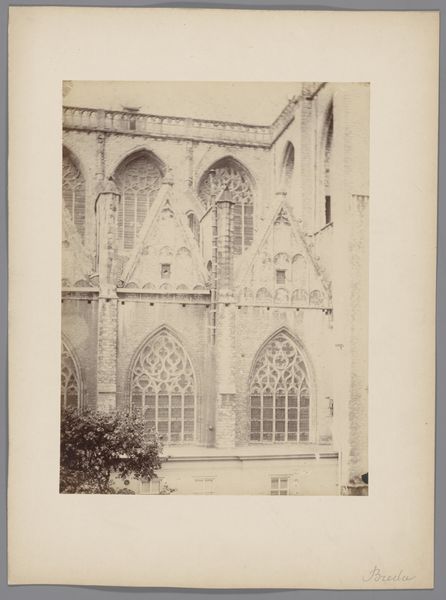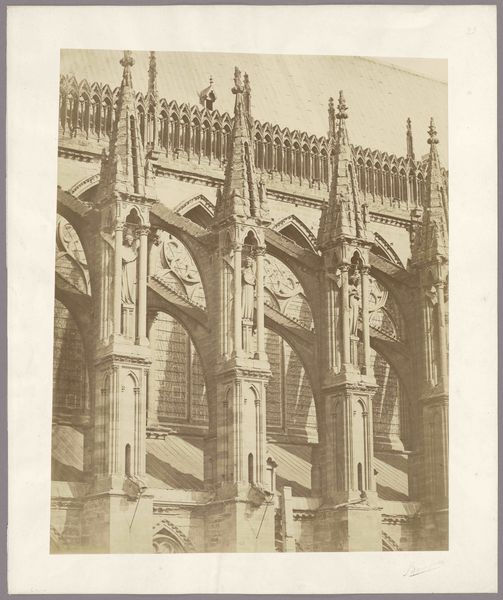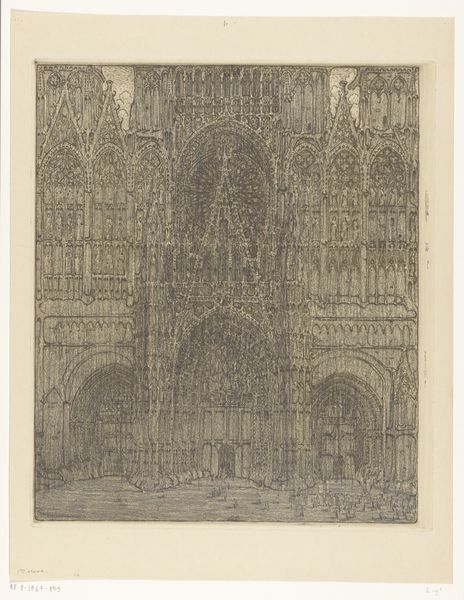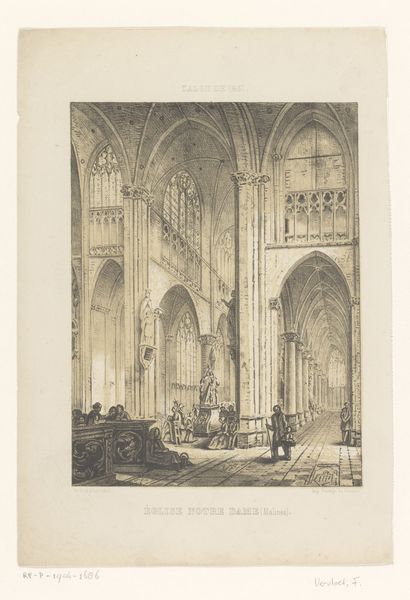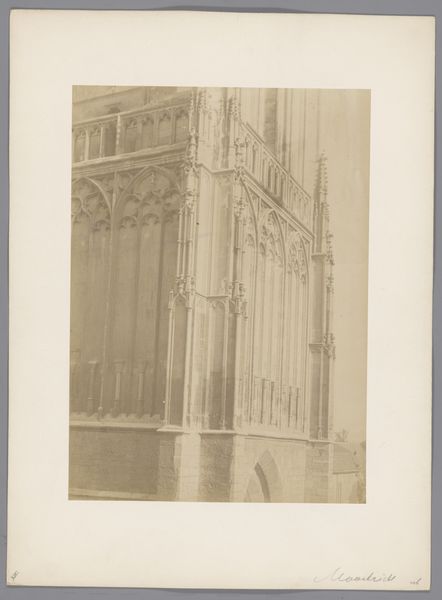
Copyright: Public Domain
Curator: Looking at this print by Bisson Frères, entitled "Rouen, Lodgings of the Abesse de Saint-Amand," from 1858, currently residing at the Städel Museum, what captures your attention first? Editor: It's the overwhelming grandeur, isn’t it? The photograph emphasizes the imposing scale of Gothic architecture; one almost feels dwarfed by it. And that incredible detail rendered through the albumen print… wow! Curator: Indeed, and it’s critical to contextualize such structures, which embodied the concentrated religious and political power of their time, manifested materially. This kind of overt architectural declaration often served as a visual mechanism for maintaining hierarchical social control. Editor: So, not simply a beautiful building then, but a visible symbol, reinforcing systems of domination, even through the ostentatious display of wealth via labor. One notes, too, its situation within the cityscape. Were it positioned to exert influence, perhaps even surveillance, over the populace? Curator: Precisely! These visual arrangements actively shaped civic identity and behavior. Notice how photography, then a relatively new medium, enters this dynamic. The Bisson brothers weren't simply documenting a facade, but engaging with power and representation. Photography itself has a history of political agency to consider. Editor: It becomes an active participant. Consider the choice of the albumen print as a process – the remarkable tonal range it allows, highlighting intricate ornamentation... the medium enhances that feeling of overwhelming majesty. And thinking of modern parallels, consider the use of awe-inspiring imagery in propaganda or public messaging, perhaps even our current forms of visual architectural projection and art! Curator: Absolutely. This image not only represents architecture, but the intersection of aesthetics, politics, and identity. The way a cityscape uses architecture continues to play out today. Editor: So, ultimately it serves as a visual record and an assertion of control; and our reinterpretation in the current day. Something fascinating about revisiting these places today through historic artworks. Curator: I completely agree, by recognizing this history, it provides necessary background. Thanks for offering that different perspective on art.
Comments
No comments
Be the first to comment and join the conversation on the ultimate creative platform.
